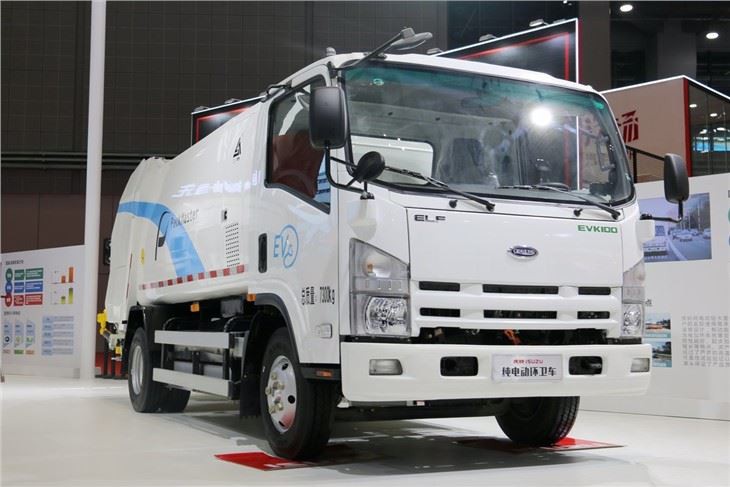Introduction to Mobile Crane Trucks
A mobile crane truck is an essential piece of equipment in the construction and transportation industries. These versatile machines combine the strength of a crane with the mobility of a truck, making them suitable for various lifting and carrying tasks in different environments. In this article, we will explore the various aspects of mobile crane trucks, including their types, components, applications, and best practices. By the end of this guide, readers will have a deep understanding of mobile crane trucks and how to utilize them effectively.
What is a Mobile Crane Truck?
A mobile crane truck is a wheeled vehicle equipped with a crane. Unlike traditional cranes, which are often stationary, mobile crane trucks can easily travel from one location to another. This mobility is crucial for delivering equipment, materials, or loads efficiently and safely. Mobile cranes come in various forms, including truck-mounted cranes, all-terrain cranes, and rough-terrain cranes, each designed for specific applications.
Types of Mobile Crane Trucks
1. Truck-Mounted Cranes
Truck-mounted cranes are built on trucks and can be driven to different job sites. They are perfect for urban construction and general lifting applications due to their flexibility.
2. All-Terrain Cranes
All-terrain cranes are designed to travel both on highways and rough terrains. They combine features of truck-mounted and rough-terrain cranes, making them ideal for various environments.
3. Rough-Terrain Cranes
Rough-terrain cranes are capable of handling off-road conditions. They feature large tires and a four-wheel drive, allowing them to navigate difficult landscapes.
4. Mini Cranes
Mini cranes are compact machines designed for narrow or confined spaces. They are particularly useful for indoor operations and small projects.
Components of a Mobile Crane Truck
1. Boom
The boom is the main lifting arm of the crane, which can be extended or retracted to reach different heights. Booms come in various lengths and can be fixed or telescopic.
2. Hoist and Hook
The hoist is the mechanism that raises and lowers the load via a hook. The hook connects to slings or chains that secure the load for lifting.
3. Operator Cab
The operator cab is where the crane operator controls the crane’s movements. It’s often equipped with advanced technology to assist in safe operations.
4. Chassis and Axles
The chassis supports the crane and provides stability during operations. The number of axles varies depending on the crane’s design and load capacity.
Applications of Mobile Crane Trucks
1. Construction
Mobile crane trucks are widely used in construction for lifting heavy materials such as steel beams, concrete panels, and equipment. Their ability to move between sites makes them a preference for contractors.
2. Transportation
They are used to transport heavy loads to and from job sites, especially when the materials are oversized or unusually shaped.
3. Rescue Operations
In emergencies, mobile crane trucks can assist in rescue operations by lifting vehicles or debris and accessing hard-to-reach places.
4. Industrial Applications
Manufacturing facilities use mobile cranes to lift heavy machinery and equipment during installation or maintenance processes.
Mobile Crane Truck Safety Tips
1. Training and Certification
Ensure the operator has proper training and certification to operate the crane. Knowledge of safety protocols is essential for safe operations.
2. Pre-Operation Inspection
Conduct a thorough inspection of the crane before use. Check for any mechanical issues, fluid leaks, and the condition of cables and hooks.
3. Load Limit Adherence
Always adhere to the load limits specified by the manufacturer. Overloading can lead to accidents and equipment failure.
4. Clear Work Area
Maintain a clear work area around the crane. Establish a safe zone and inform all personnel of the operation being performed.
Cost Factors of Mobile Crane Trucks
1. Purchase vs. Rental
Investing in a mobile crane truck can be a significant financial commitment. Depending on the project needs, renting may be a more cost-effective option.
2. Maintenance Costs
Regular maintenance is crucial for ensuring the crane’s longevity and performance. Budget for routine maintenance and unexpected repairs.
3. Insurance
Proper insurance coverage protects against damages and liabilities. Evaluate insurance options to find the best coverage for your needs.
Choosing the Right Mobile Crane Truck
1. Assess Project Requirements
Evaluate the specific requirements of your project, including load size and weight, lift height, and operational environment.
2. Consult Experts
Engage with suppliers or crane rental services to seek expert advice on selecting the best crane for your needs.
3. Consider Mobility and Versatility
Choose a crane that offers the best mobility and versatility according to the terrain where it will operate.
Maintenance Best Practices for Mobile Crane Trucks
1. Regular Inspections
Schedule regular inspections to detect potential issues early. This includes checking hydraulic systems, cables, and overall functionality.
2. Keep Records
Maintain detailed records of inspections, repairs, and maintenance to ensure compliance and prolong the crane’s operational life.
3. Follow Manufacturer Guidelines
Always follow the manufacturer’s guidelines for maintenance schedules and operations to ensure optimal performance.
FAQ Section
1. What is the average cost of a mobile crane truck?
The cost varies widely depending on the type and size, ranging from $100,000 to over $1 million for larger models.
2. Can I rent a mobile crane truck?
Yes, many construction and equipment rental companies offer mobile crane truck rentals for short-term or long-term projects.
3. How do I choose the right crane operator?
Look for operators with relevant certifications, experience, and a good safety record to ensure safe operations.
4. Are mobile crane trucks environmentally friendly?
Newer models are designed to be more energy-efficient and have lower emissions, making them more environmentally friendly than older models.
5. How does weather affect crane operations?
Extreme weather conditions, such as high winds or storms, can pose safety risks. Operations should be suspended during adverse weather.
6. What safety gear should an operator use while operating a crane?
Operators should wear hard hats, safety glasses, gloves, and high-visibility clothing to protect against hazards on the job site.





